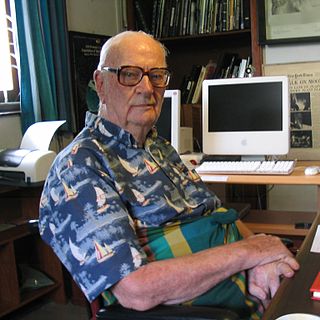
Hard science fiction is a category of science fiction characterized by concern for scientific accuracy and logic. The term was first used in print in 1957 by P. Schuyler Miller in a review of John W. Campbell's Islands of Space in the November issue of Astounding Science Fiction. The complementary term soft science fiction, formed by analogy to hard science fiction, first appeared in the late 1970s. The term is formed by analogy to the popular distinction between the "hard" (natural) and "soft" (social) sciences, although there are examples generally considered as "hard" science fiction such as Isaac Asimov's Foundation series, built on mathematical sociology. Science fiction critic Gary Westfahl argues that neither term is part of a rigorous taxonomy; instead they are approximate ways of characterizing stories that reviewers and commentators have found useful.

Paul J. McAuley is a British botanist and science fiction author. A biologist by training, McAuley writes mostly hard science fiction. His novels dealing with themes such as biotechnology, alternative history/alternative reality, and space travel.

Alastair Preston Reynolds is a Welsh science fiction author. He specialises in hard science fiction and space opera.

A desert planet, also known as a dry planet, an arid planet, or a dune planet, is a type of terrestrial planet with an arid surface consistency similar to Earth's deserts. Mars is a prominent example of a desert planet in the Solar System.
The Space Trilogy is a series of science fiction novels by C. S. Lewis. The trilogy consists of Out of the Silent Planet (1938), Perelandra (1943), and That Hideous Strength (1945). A philologist named Elwin Ransom is the protagonist of the first two novels and an important character in the third.
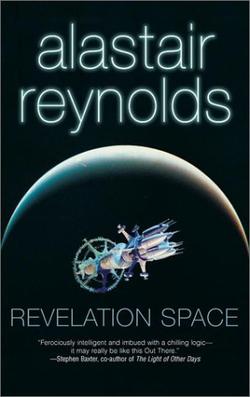
Revelation Space is a 2000 science fiction novel by Welsh author Alastair Reynolds. It was the first novel set in Reynolds's eponymous universe. The novel reflects Reynolds's professional background: he has a PhD in astronomy and worked for many years for the European Space Agency. It was short listed for the 2000 BSFA and Arthur C. Clarke Awards.

The Saga of Seven Suns is a series of seven space opera novels by American writer Kevin J. Anderson, published between 2002 and 2008. The books are set in a not-too-distant future where humans have colonized a number of other planets across the galaxy, thanks in part to technological assistance from an ancient alien race, the Ildirans. The series chronicles the universe-spanning war that erupts when humans inadvertently ignite the fury of a hidden empire of elemental aliens known as the hydrogues. Internal conflict is sparked within both the human and Ildiran empires as other ancient elemental races reappear to renew their own ancient war with the hydrogues.
This is a list of occurrences of space elevators in fiction. Some depictions were made before the space elevator concept became fully established.

Saturn has made appearances in fiction since the 1752 novel Micromégas by Voltaire. In the earliest depictions, it was portrayed as having a solid surface rather than its actual gaseous composition. In many of these works, the planet is inhabited by aliens that are usually portrayed as being more advanced than humans. In modern science fiction, the Saturnian atmosphere sometimes hosts floating settlements. The planet is occasionally visited by humans and its rings are sometimes mined for resources.

Mundane science fiction (MSF) is a niche literary movement within science fiction that developed in the early 2000s, with principles codified by the "Mundane Manifesto" in 2004, signed by author Geoff Ryman and "The Clarion West 2004 Class". The movement proposes "mundane science fiction" as its own subgenre of science fiction, typically characterized by its setting on Earth or within the Solar System; a lack of interstellar travel, intergalactic travel or human contact with extraterrestrials; and a believable use of technology and science as it exists at the time the story is written or a plausible extension of existing technology. There is debate over the boundaries of MSF and over which works can be considered canonical. Rudy Rucker has noted MSF's similarities to hard science fiction and Ritch Calvin has pointed out MSF's similarities to cyberpunk. Some commentators have identified science fiction films and television series which embody the MSF ethos of near-future realism.

Tantor is a generic name for elephants in Mangani, the fictional language of the great apes in the Tarzan novels of Edgar Rice Burroughs. In Burroughs's works a number of elephants appear under the name of Tantor, most notably one particular bull elephant the ape man befriends in his youth in the first Tarzan novel, Tarzan of the Apes and in the 1999 animated Walt Disney film he is a red African forest elephant and friends with the ape Terk.
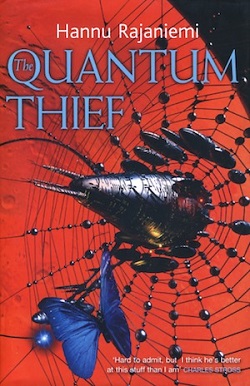
The Quantum Thief is the debut science fiction novel by Finnish writer Hannu Rajaniemi and the first novel in a trilogy featuring the character of Jean le Flambeur; the sequels are The Fractal Prince (2012) and The Causal Angel (2014). The novel was published in Britain by Gollancz in 2010, and by Tor in 2011 in the US. It is a heist story, set in a futuristic Solar System, that features a protagonist modeled on Arsène Lupin, the gentleman thief of Maurice Leblanc.

Blue Remembered Earth is a science fiction novel by Welsh author Alastair Reynolds, first published by Gollancz on 19 January 2012. It describes the efforts of two adult siblings to solve a mystery in the pseudo-utopian 2160s. The novel is the first of the Poseidon's Children trilogy, which follows humanity's development over many centuries, with the intention of portraying a more optimistic future than anything Reynolds had previously written. The second book in the trilogy, On the Steel Breeze, was released on 26 September 2013, and the trilogy's finale, Poseidon's Wake, was released on 30 April 2015.
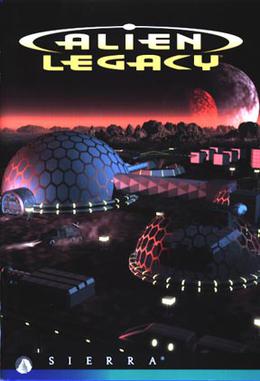
Alien Legacy is a sci-fi strategy game developed by Ybarra Productions and published by Sierra On-Line in 1994 for MS-DOS.
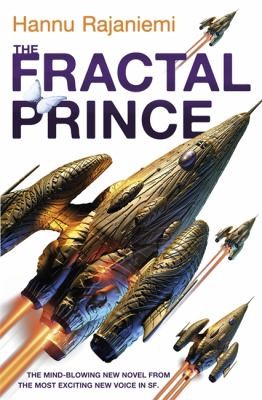
The Fractal Prince is the second science fiction novel by Hannu Rajaniemi and the second novel to feature the post-human gentleman thief Jean le Flambeur. It was published in Britain by Gollancz in September 2012, and by Tor in the same year in the US. The novel is the second in the trilogy, following The Quantum Thief (2010) and preceding The Causal Angel (2014).

2312 is a hard science fiction novel by American writer Kim Stanley Robinson, published in 2012. It is set in the year 2312 when society has spread out across the Solar System. The novel won the 2013 Nebula Award for Best Novel.
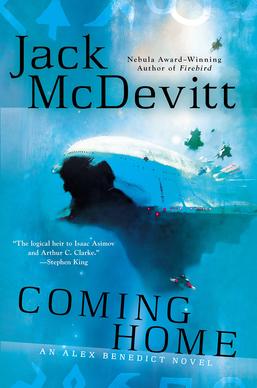
Coming Home is a science fiction novel by American writer Jack McDevitt. It is the seventh in the Alex Benedict series, and was released in November 2014. Coming Home was nominated for the 2014 Nebula award for best novel.
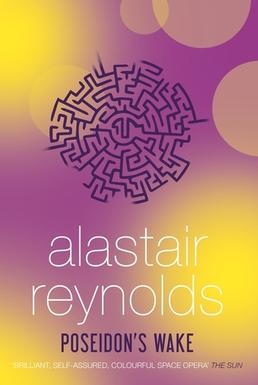
Poseidon's Wake is a science fiction novel by Welsh author Alastair Reynolds. It forms the conclusion of Reynolds' Poseidon's Children future history trilogy, which follows the expansion of humanity and its transhuman descendants into the galaxy over the course of many centuries. Poseidon's Wake follows Blue Remembered Earth (2012) and On the Steel Breeze (2013), and was published by Gollancz on 30 April 2015.
















